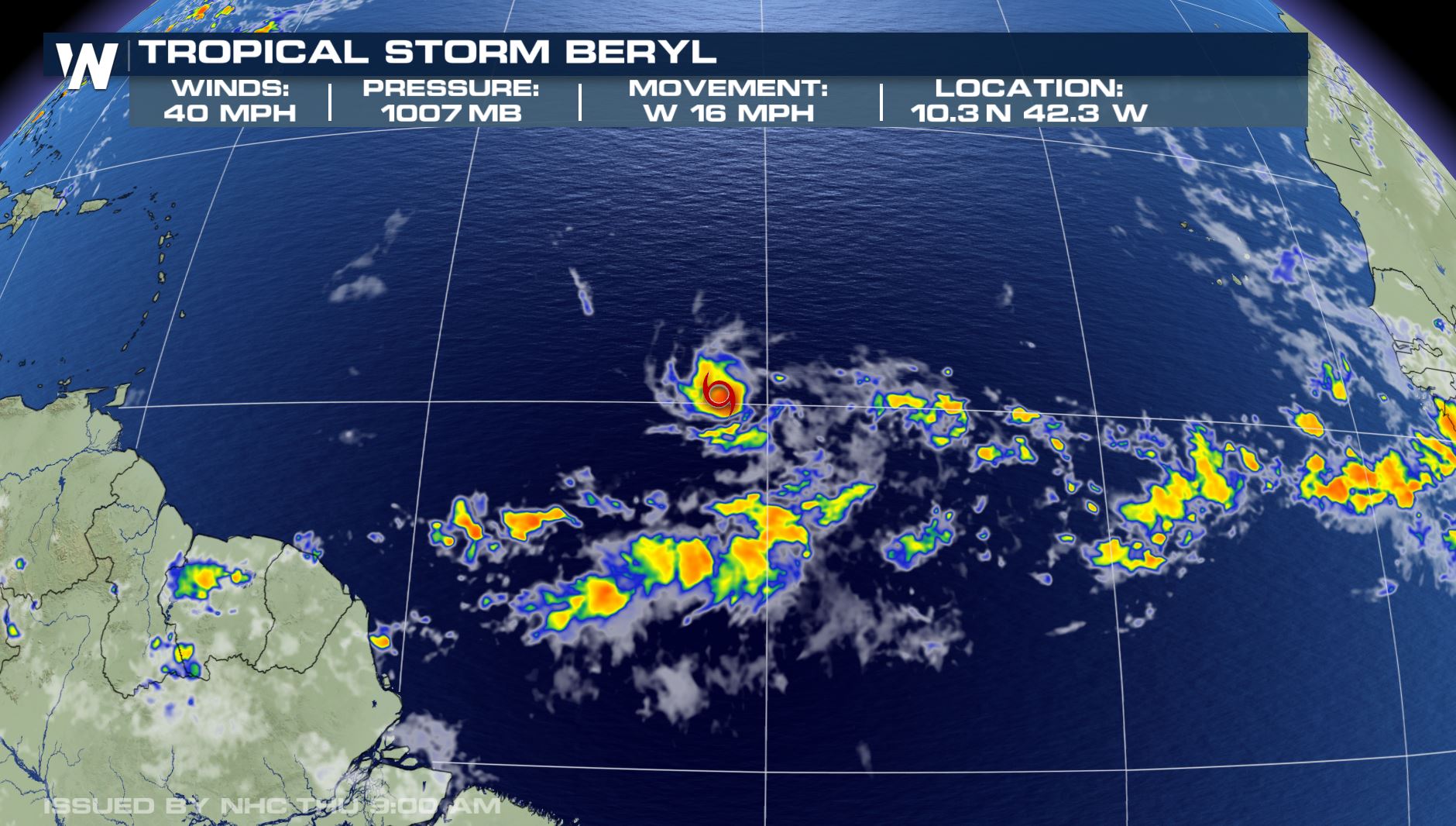Storm Beryl’s Trajectory
Storm beryl path – Storm Beryl, a tropical storm, is expected to make landfall in the southeastern United States later this week. The storm is currently located in the Atlantic Ocean, about 200 miles east of the Florida coast. Beryl is moving west-northwest at 12 mph and is expected to strengthen into a hurricane by the time it reaches the coast.
Storm Beryl, with its unpredictable path, has left many on edge. For the latest updates on its trajectory, refer to the path of hurricane beryl for detailed information. By staying informed, you can make informed decisions regarding your safety and well-being as Storm Beryl continues on its uncertain path.
The National Hurricane Center has issued a hurricane warning for the coast of Florida from Vero Beach to the Florida-Georgia border. A tropical storm warning is in effect for the coast of Georgia from the Florida-Georgia border to Altamaha Sound.
Historical Data
Historical data shows that storms similar to Beryl have caused significant damage to the southeastern United States. In 1999, Hurricane Floyd made landfall in North Carolina as a Category 4 hurricane, causing widespread flooding and power outages. In 2004, Hurricane Ivan made landfall in Alabama as a Category 3 hurricane, causing extensive damage to the Gulf Coast.
Potential Changes
The intensity and direction of Storm Beryl are still uncertain. The storm could weaken or strengthen as it approaches the coast. The storm could also change direction, depending on the steering currents in the atmosphere.
Storm Beryl has been lashing the Caribbean, leaving a trail of destruction in its wake. The storm has now made landfall in Jamaica, bringing heavy rains and strong winds to the island. Hurricane Beryl Jamaica has caused widespread flooding and damage, and thousands of people have been evacuated from their homes.
The storm is expected to continue to move across Jamaica and into the Gulf of Mexico, where it is likely to strengthen into a hurricane. Storm Beryl is a powerful storm, and it is important to stay informed about its path and take precautions to stay safe.
Storm Beryl’s Impact Assessment: Storm Beryl Path

Storm Beryl is expected to bring heavy rainfall, strong winds, and possible flooding to the affected areas. The storm’s path is still uncertain, but it is expected to make landfall within the next 24 hours.
The potential risks and hazards associated with Storm Beryl include:
Flooding
Flooding is the most significant risk associated with Storm Beryl. The storm is expected to bring heavy rainfall, which could lead to flash flooding and riverine flooding. Flash flooding can occur quickly, with little warning, and can be extremely dangerous. Riverine flooding occurs when rivers and streams overflow their banks, inundating surrounding areas.
Wind Damage
Storm Beryl is also expected to bring strong winds, which could cause damage to trees, power lines, and buildings. High winds can also create dangerous conditions for driving and outdoor activities.
Power Outages
The combination of heavy rain and strong winds could lead to power outages. Power outages can disrupt daily life and can also pose a safety hazard.
Number of People and Properties Affected
The number of people and properties that could be affected by Storm Beryl is still uncertain. However, the storm is expected to impact a large area, and it is possible that hundreds of thousands of people could be affected.
Measures Being Taken to Mitigate the Impact of the Storm, Storm beryl path
Local and state officials are taking steps to mitigate the impact of Storm Beryl. These measures include:
– Issuing evacuation orders for low-lying areas
– Activating emergency response teams
– Stockpiling food and water
– Clearing storm drains and culverts
– Monitoring the storm’s progress and providing regular updates to the public
Storm Beryl’s Aftermath
In the wake of Storm Beryl, recovery efforts will commence swiftly to restore normalcy and alleviate the impact on affected communities.
A comprehensive timeline for recovery operations has been established, outlining the key stages and milestones:
- Immediate Response (24-48 hours): Focus on search and rescue operations, damage assessment, and provision of emergency shelter and supplies.
- Stabilization (1-2 weeks): Infrastructure repairs, debris removal, and restoration of essential services such as electricity and water.
- Recovery (2-6 months): Long-term rebuilding efforts, including housing repairs, business recovery, and community support programs.
Numerous resources are available to assist affected communities during the recovery process:
- Federal Emergency Management Agency (FEMA): Provides financial assistance, disaster relief, and coordination of recovery efforts.
- American Red Cross: Offers shelter, food, medical assistance, and emotional support to those in need.
- Local government agencies: Provide support services, including debris removal, infrastructure repairs, and community outreach programs.
Lessons Learned from Previous Storms
Storm Beryl serves as a reminder of the importance of preparedness and effective response strategies. Lessons learned from previous storms can be applied to enhance future efforts:
- Early warning systems: Timely and accurate warnings allow communities to evacuate and take precautionary measures.
- Community resilience: Building strong community networks and promoting individual preparedness enhances resilience to disasters.
- Interagency coordination: Collaboration between federal, state, and local agencies ensures efficient and effective response.
- Post-disaster recovery planning: Pre-planning for recovery operations streamlines the process and reduces the impact on affected communities.
By incorporating these lessons into future preparedness and response plans, communities can mitigate the impact of storms and enhance their ability to recover swiftly and effectively.
